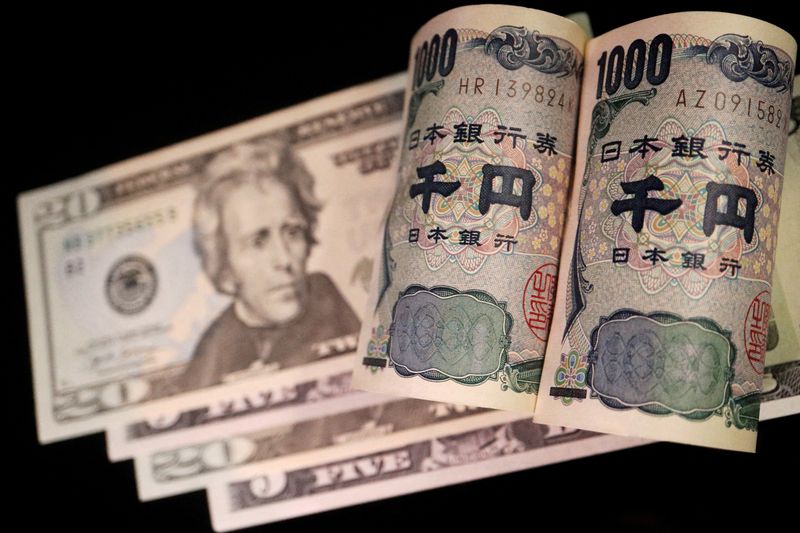By Gertrude Chavez-Dreyfuss
NEW YORK (Reuters) – The dollar gained across the board on Monday, regaining some of the luster it lost earlier in the month, bolstered by expectations of another supersized rate increase at this week’s Federal Reserve monetary policy meeting.
That said, the dollar’s gains could be limited if the Fed signals on Wednesday that the pace of rate hikes will slow as it assesses the impact so far of its policy tightening.
Sterling, on the other hand, was on the defensive against the dollar and the euro, despite market forecasts of another 75 basis-point rate hike by the Bank of England later this week as well.
The Fed is widely expected to raise its benchmark overnight interest rate by 75 basis points (bps) to a range of 3.75% to 4.00%, its fourth such increase in a row. But for the December meeting, fed funds futures have priced in on Monday a 55% chance of a 50-bps rate increase, down from about 67% last Friday.
In afternoon trading, the dollar rose 0.8% against the struggling yen to 148.62 yen. For the month of October, the dollar was up 2.7%, on track to post its third monthly gain versus the Japanese currency.
“I think the dollar in general is consolidating. A lot of the news has already been priced into the dollar,” said Amo Sahota, executive director at FX consulting firm Klarity FX in San Francisco.
“If the dollar is to make new gains, I think it would be relatively marginal. Generally, the dollar is somewhere in the bend – trying to establish a high, but has not generally done so. Think there is an exhaustion in that trade.”
On Monday, Japan’s finance ministry said it spent a record $42.8 billion on currency intervention this month to prop up the yen. A steep drop in the yen to a 32-year low of 151.94 to the dollar on Oct. 21 likely triggered the intervention, followed by another one on Oct. 24.
The dollar likewise climbed against the Swiss franc, rising 0.6% to 1.0014 francs.
The greenback, however, was on pace for a monthly decline of 0.5% in October, based on the dollar index. That would be its first fall since May and only its second this year.
Sterling fell 1.2% against the dollar to $1.1476. The BoE is likely to deliver a 75-basis point hike at Thursday’s meeting, although analysts said longer-term rate expectations are coming under sustained pressure.
The pound also fell versus the euro, which rose 0.5% to 86.16 pence.
BoE Deputy Governor Ben Broadbent recently suggested that the borrowing costs priced by investors would hammer the UK economy, noting that he’s doubtful Britain could engineer a “soft-landing” – a U.S. term for bringing inflation back to target without significantly damaging the real economy.
The euro dropped 0.8% against the dollar to $0.9887. The euro barely reacted after data released on Monday that showed eurozone inflation came in hotter than expected at 10.7%, a fresh record high.
Elsewhere, the Chinese yuan slumped after data released on Monday showed China’s factory activity unexpectedly fell in October, weighed down by softening global demand and strict domestic COVID-19 curbs.
The dollar was last 0.9% higher against the yuan traded offshore at 7.336. [CNY/]
The Reserve Bank of Australia (RBA), meanwhile, is tending towards the dovish end of the spectrum and is expected to raise interest rates by a more modest 25 bp at its Tuesday meeting, even as inflation raced to a 32-year high last quarter.
The Aussie dollar was last down 0.3% at US$0.6392.
In the emerging market world, the U.S. dollar dropped more than 2% against the Brazilian real after former president Luiz Inacio Lula da Silva narrowly defeated President Jair Bolsonaro in a run-off election.


